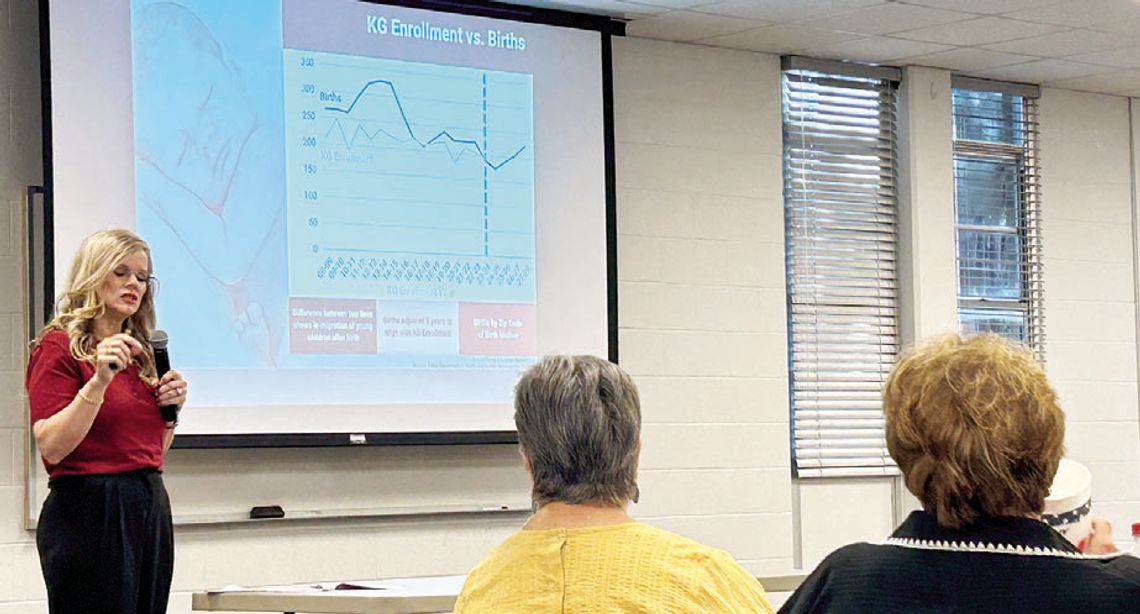The Taylor Independent School District could be running out of room by 2030 unless more facilities are built, according to a recent demographic study.
Taylor ISD partnered with a Texas consulting firm to conduct the study and presented the findings during a joint meeting with the school board and City Council Aug. 16.
“They looked at our facilities, our capacity, what’s up and coming as far as the student enrollment for the next 10 years,” Taylor ISD Superintendent Jennifer Garcia-Edwardsen said to introduce the presentation.
Population and Survey Analysts partners with Texas school districts to project student enrollment and conduct long-range facilities planning, attendees at the joint session heard.
To do so, the firm gathers recent demographic trends and data on past and current students to compare with current and planned trends in the economy and housing to help determine potential needs in facilities.
The firm recommends that districts build new facilities once the current ones reach 120% capacity.
Pasemann Elementary School and Taylor High School are expected to be over capacity by 2030.
“The districts need to understand when and where the new students are going to be coming along, and … they need to prepare for having new facilities,” PASA Director of Planning Kris Pool said. “It takes a long time to construct and plan for and … pass a bond for new facilities.”
Based on the city’s current, planned and proposed developments, there are 14 areas for projected single-family occupancy units and seven areas for projected multi-family occupancy units, with Castlewood and Spring Creek currently under construction, officials said.
“They’re (Taylor) going back to a type of development that is very neighborhoodfocused. It’s anchored by economic drivers and neighborhood amenities … And so, (what) we’re going to see inside the city limits is a higher density of growth than you might expect in a community that is emerging from rural to suburban,” PASA demographer Susan Cates said.
These housing developments drive the majority of the student growth. The other factors in the projection are attributed to recent declines — including birth rates, incoming kindergarten-class size, aging of existing subdivisions and more.
Charter schools are also a factor. These schools are not very present in the area, but PASA representatives noted they can open very quickly.
Though they are public schools, charter schools are independent and not bound by attendance zones, as well as being tuition free and are exempt from many of the regulations that govern traditional public- school districts.
PASA brings these factors together to create three scenarios of growth: low, moderate and high. In the moderate growth scenario, it predicted the district to enroll over 3,700 students by 2028 and almost 7,000 by 2033.
School started Aug. 14 with an enrollment of 3,004, a district spokesman said. Taylor ISD is home to six schools — a high school, a middle school, three elementary schools and an Early College High School where learners can earn up to 60 hours of college credit.
“It will have to be continually watched and revised along the time period,” Pool said. “The moderate growth scenario assumes that we think we know what’s going on with kindergarten and birth rates, that we think we know what’s going on with mortgage rates and that we don’t have any sorts of charter schools. On the low end and high end, those things can change.”
Officials in the past have said much of the growth is being driven by the emergence of area high-tech hubs, anchored by the presence of the multibilliondollar Samsung Austin Semiconductor facility in Taylor.









